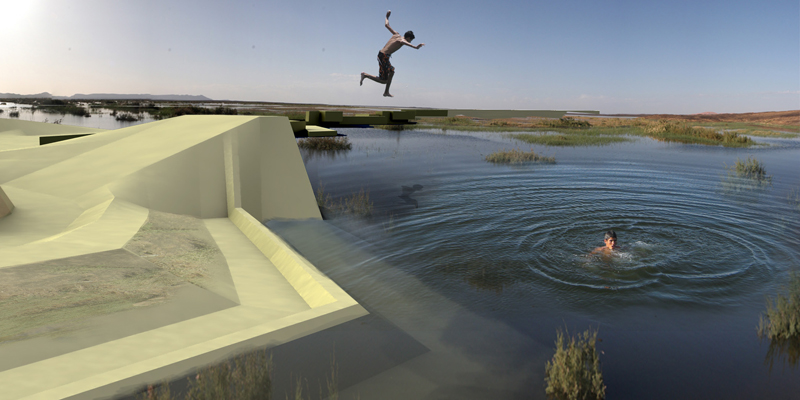DESERT PARADOX: GOLFING IN THE DUNES
Oases in the Saharan regions of Southern Morocco have been incrementally undermined by several factors. First, the rupture of the trans-Saharan caravan trade and migration routes, which was accomplished through the regulatory powers of the state in the colonial and post-colonial periods, and its reinforcement of borders. Second, the erosion of the traditional organization of the social fabric that was centered upon the communal management of water resources, a key adaptation to the desert’s difficult and unpredictable climatic conditions, and its replacement by an exploitative, individualistic mode of water use. Third, the abandonment of the agricultural architecture of the oases, which consisted of an integrated system of three vegetation layers (palm trees, fruit trees, and wheat) in favor of other forms of economic activities or rural exodus, which contributed to the deterioration of the oases’ vegetal cover and the subsequent advance of the desert.
In the face of such environmental and socio-economic conditions, innovative forms of tourist infrastructure and programs could be a means to alleviate distressed arid landscapes and local economies. Yet, given this fragile context and the mobility of sand dunes, such structures should imperatively limit their ecological footprint by integrating concepts of mobility and temporality.
In the past two decades, one of the most lucrative sector in Moroccan tourism has been golf tourism, and a series of courses and professional trophies have been developed all throughout Morocco’s diverse landscapes. However, golf courses proposed in desert areas have been so far both ecological and economic disasters, as their large water consumption and extensive use of fertilizer have devastated their sites. The models implemented have failed to take into consideration not only the drastic arid conditions but also the shifting nature of the landscape. The golf courses’ large water consumption and extensive use of fertilizers have devastated their sites and surroundings. Is a desert golf conceivable? Could this oxymoron come to support a sustainable form of desert tourist infrastructure? Students focused on on the southern region of Morocco: Erfoud/Mezouga that they visited at the first week of October 2009. They proposed innovative solutions to desert ecoltourism integrating ‘green’ golf courses.
SELECTED PROJECTS: (Click Below for More)


